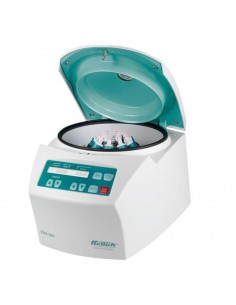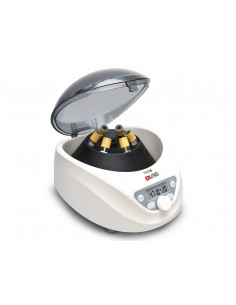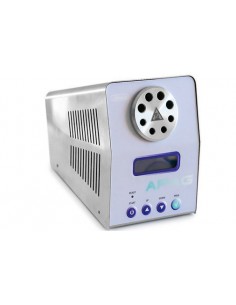
A laboratory centrifuge is a specialized device designed to separate multicomponent substances into fractions. The operating principle of the equipment involves rapid spinning (centrifugation), which causes substances to settle on the walls of the laboratory containers at different levels based on their mass and density: lighter components settle at the top, while heavier ones settle at the bottom. No modern laboratory can function without a centrifuge. The accuracy of the device’s operation determines the precision of research, so it is recommended to choose the equipment very carefully.
Types of Laboratory Centrifuges for PRP:
- Microcentrifuges: Designed for tubes holding a few milliliters, with a rotation speed of up to 20,000 RPM.
- Universal Centrifuges: Intended for medium volumes, often equipped with additional features.
- Ultracentrifuges: Used for separating nanoparticles, commonly applied in scientific research.
When selecting a model, consider the following parameters: the volume of laboratory containers, the properties of the substances to be processed, and the number of runs required over a certain period. The compactness of the device is crucial – it should not take up too much space or interfere with other procedures and research activities.
In our store, you can purchase a centrifuge for PRP procedures at an affordable price with delivery.
Centrifuge for PRP: Features and Characteristics
PRP (Platelet-Rich Plasma) is a medical procedure performed using the patient’s platelet-enriched plasma. A special centrifuge is required to obtain this plasma. The design of the centrifuge includes the following elements: a motor to generate rotational force, a lid and body, a working chamber, a power cord, and a control panel.
Equipment Requirements:
- The ability to quickly obtain platelet-rich plasma (PRP will be ineffective if the plasma lacks sufficient platelets);
- Adjustable rotation speed up to 4,000 RPM;
- Rotor capacity of at least 8-12 tubes;
- Ease of use and reliability of equipment components;
- Certification compliance;
- Reasonable pricing.
Only trained personnel should operate the centrifuge, having first studied the instructions and considering necessary safety measures.
Application of the Centrifuge for PRP
PRP promotes the initiation of regenerative processes in the body using the patient's own cells. A specialized centrifuge is essential for the procedure, which can be found on our website.
Procedure Steps:
- Venous blood is drawn from the patient and placed into a special tube.
- The tube is inserted into the working chamber of the centrifuge, and the device is activated.
- The centrifugation process separates the blood plasma along with the platelets from other components.
- The specialist extracts only the plasma, which is then processed and reintroduced into the patient.
The quality of centrifugation is the key element of an effective procedure. The plasma should retain as many platelets as possible to initiate tissue regeneration. The plasma must be as purified as possible from other blood elements.



